Adjusting an ATV Carburetor: Part One
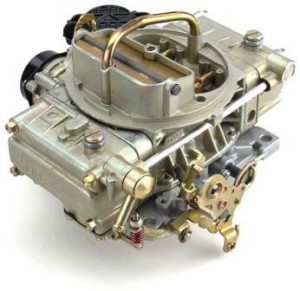 The carburetor is one of the most vital components of any two-stroke engine, as it works to blend the air, fuel, and outboard motor oil so that they can be utilized in the stroke cycle. For many owners of two-stroke engines, however, carburetor maintenance and mechanical issues are a headache. The next few days we will go over the basics for making routine adjustments to the carburetor.
The carburetor is one of the most vital components of any two-stroke engine, as it works to blend the air, fuel, and outboard motor oil so that they can be utilized in the stroke cycle. For many owners of two-stroke engines, however, carburetor maintenance and mechanical issues are a headache. The next few days we will go over the basics for making routine adjustments to the carburetor.
Always start by adjusting the idle, which controls the RPMs that the engine runs at. Set the idle speed to the proper RPM level by adjusting the idle screw. Next, turn the idle mixture screw so that the engine runs smoothly, with the optimal speed and response. Once this is done, make any final adjustments to the idle screw that may be needed. Tomorrow we will continue reviewing carburetor adjustments.


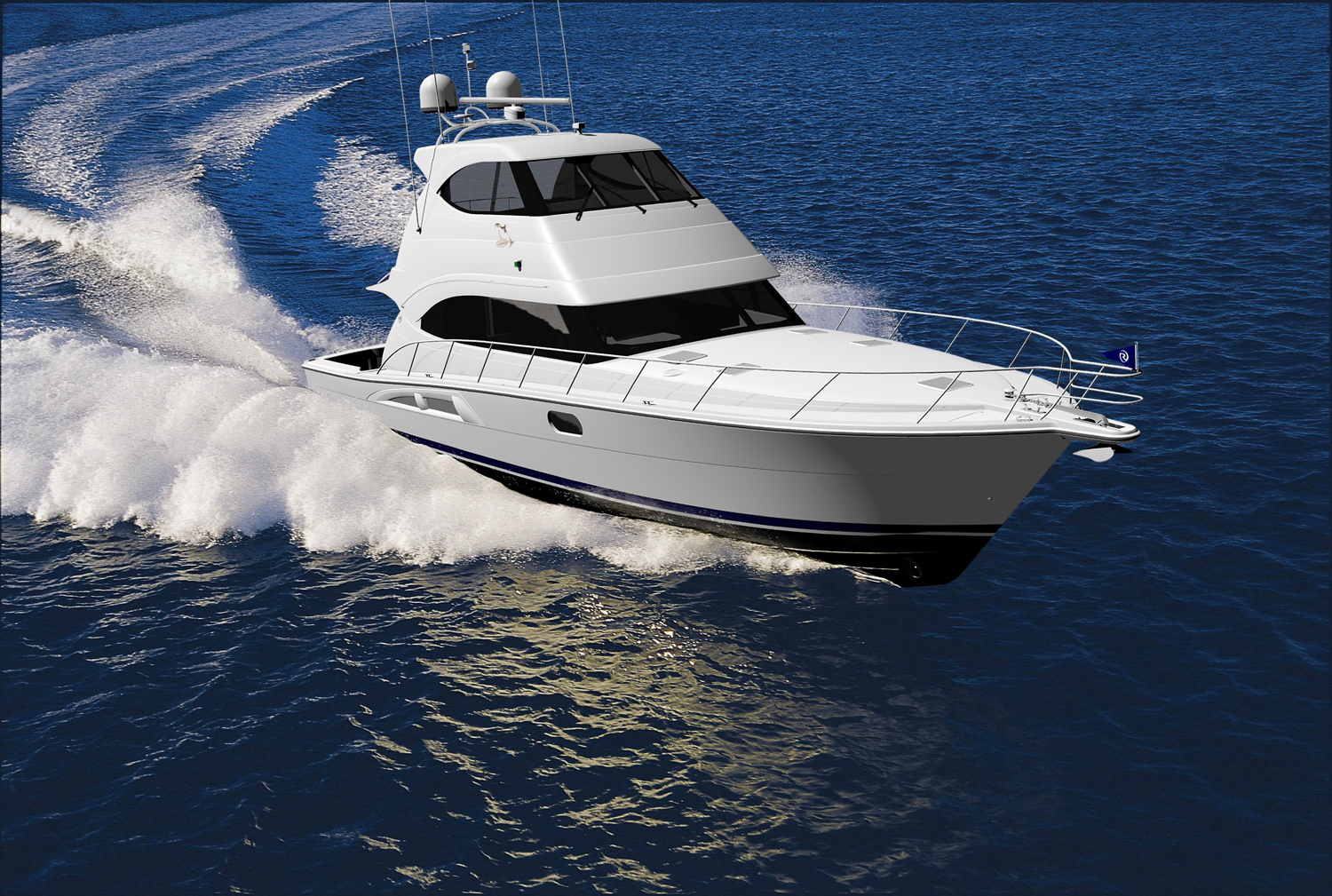


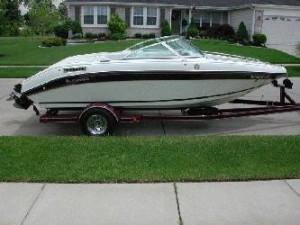 Aside from your house or car, a boat is probably one of the biggest purchases that you will ever make. With that in mind, it is important to do some research before dropping thousands on a watercraft. One of the most important things to consider is whether you want an inboard or outboard motor.
Aside from your house or car, a boat is probably one of the biggest purchases that you will ever make. With that in mind, it is important to do some research before dropping thousands on a watercraft. One of the most important things to consider is whether you want an inboard or outboard motor.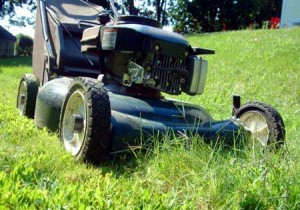 Now that we have overviewed the inner workings of a two-stroke engine, the advantages should be ascertainable. The consolidation of the stroke cycle allows for a more rudimentary and lightweight design, which also produces more power. This combination makes two-stroke engines ideal for various handheld equipment and small vehicles. With these obvious advantages, some may be wondering why two-stroke engines aren’t used in cars and other large vehicles.
Now that we have overviewed the inner workings of a two-stroke engine, the advantages should be ascertainable. The consolidation of the stroke cycle allows for a more rudimentary and lightweight design, which also produces more power. This combination makes two-stroke engines ideal for various handheld equipment and small vehicles. With these obvious advantages, some may be wondering why two-stroke engines aren’t used in cars and other large vehicles.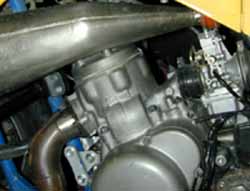 Yesterday we overviewed the main process that takes place in the cycle of a two-stroke engine. Now we are going to breakdown this process a little further to better understand what is occurring in this process. When the piston is working in its cycle, the crankshaft will give the piston momentum so that it can return to the spark plug for the compression stroke. During this process the piston compresses the mixture of
Yesterday we overviewed the main process that takes place in the cycle of a two-stroke engine. Now we are going to breakdown this process a little further to better understand what is occurring in this process. When the piston is working in its cycle, the crankshaft will give the piston momentum so that it can return to the spark plug for the compression stroke. During this process the piston compresses the mixture of 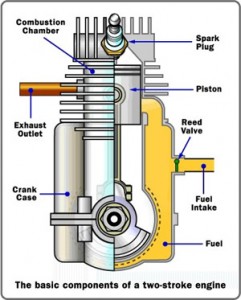 Yesterday we overviewed some of the basics differences between four and two-stroke motors. Today we will go over some of the mechanical operations of the engine. A two-stroke engine is essentially a simplified version of the four-stroke, and this means that the cycle is more economical and many of the operations are consolidated. As we said previously, one of the biggest differences is that the spark plug fires once every revolution, as opposed to every other revolution.
Yesterday we overviewed some of the basics differences between four and two-stroke motors. Today we will go over some of the mechanical operations of the engine. A two-stroke engine is essentially a simplified version of the four-stroke, and this means that the cycle is more economical and many of the operations are consolidated. As we said previously, one of the biggest differences is that the spark plug fires once every revolution, as opposed to every other revolution.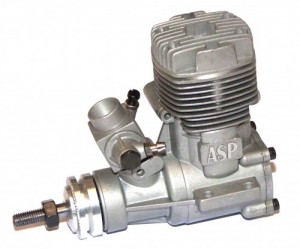

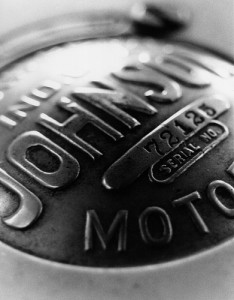 The benchmark for two cycle oil is TC-W3 certification. Two stroke engines require users to mix the fuel with
The benchmark for two cycle oil is TC-W3 certification. Two stroke engines require users to mix the fuel with 
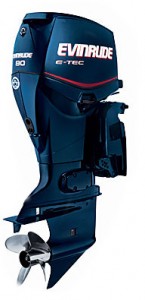 A recent study of outboard motors yielded evidence that quieter motors are also more fuel efficient as well as better for the environment. The test was run on a 1988 Evinrude outboard motor versus a 2008 Evinrude outboard motor. The results of the test were as follows:
A recent study of outboard motors yielded evidence that quieter motors are also more fuel efficient as well as better for the environment. The test was run on a 1988 Evinrude outboard motor versus a 2008 Evinrude outboard motor. The results of the test were as follows: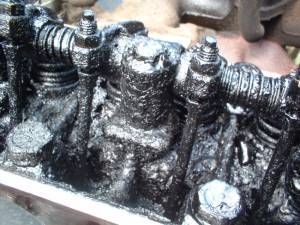 What exactly does engine oil do for your car? Engine oil prevents all the metal surfaces in your engine from grinding together due to friction. It also keeps your engine free from all the foul by-products that build up inside an engine because of combustion. In addition, engine oil protects all the moving parts of an engine.
What exactly does engine oil do for your car? Engine oil prevents all the metal surfaces in your engine from grinding together due to friction. It also keeps your engine free from all the foul by-products that build up inside an engine because of combustion. In addition, engine oil protects all the moving parts of an engine. 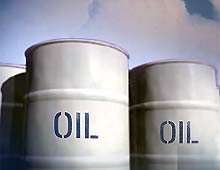 All oils are not created equal. When you’re shopping for new
All oils are not created equal. When you’re shopping for new